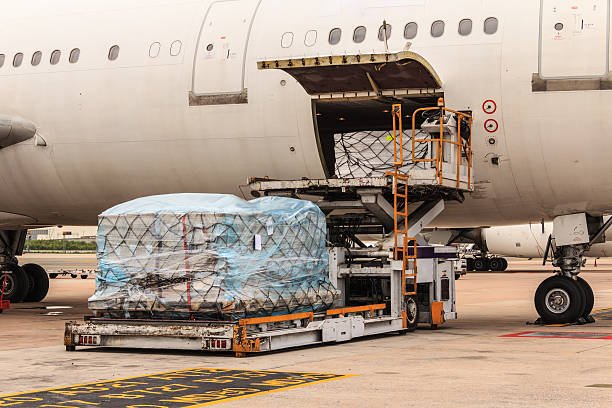How to Decide for Small Batch Shipments: Air vs. Sea Freight — Which Gives Better Time-to-Market?
For small-batch product runs, speed-to-market often determines whether a product succeeds or stalls. Sellers, SMB importers, and cross-border e-commerce brands must balance transit time, landed cost, and schedule reliability. Choosing the wrong mode—air when sea would suffice, or sea when air was needed—can lead to stockouts, higher emergency costs, and lost opportunities. This article provides a clear framework to help you decide between air and sea freight for small batches, including when to use consolidation or hybrid routing, and practical steps to meet launch dates without exceeding your budget.
When Time-to-Market Is the Priority
Limited production runs and product launches rely on rapid replenishment. Missing a launch window or promotional period can reduce early traction and waste marketing spend.
Prioritize air freight (express or standard) for items that must arrive within 1–10 business days. For very tight deadlines, use express door-to-door couriers and pre-clear customs electronically. If full air freight is too expensive, split the batch: ship a sample or top-SKU quantity by air to meet your deadline, and send the rest by sea. Always confirm airline cutoffs, flight frequency, and customs broker availability before finalizing plans.
A UK beauty brand needed 200 units for a product launch in two weeks. They shipped 60 units via express air and the rest by expedited LCL sea freight. The launch proceeded on schedule, and inventory levels normalized after the second shipment arrived.
When Cost per Unit Matters for Small Volumes
Small-batch volumes can make air freight expensive on a per-unit basis. Using air for all small orders may erode margins for lower-value items.

Compare the total landed cost, including freight, duties, drayage, and handling. If sea freight is viable, use LCL or consolidated FCL to share costs across multiple shippers. Negotiate consolidation timelines and combine SKUs to improve container utilization. Consider scheduling smaller, more frequent sea shipments during low-demand periods, and reserve air freight for high-margin or time-sensitive products.
A Canadian accessories seller switched routine restocks of low-margin items from air to weekly LCL consolidation. Per-unit freight costs decreased by over 50%, and the company continued using air only for high-margin products and peak-season demands.
When Reliability and Variability Drive the Decision
Blank sailings, port congestion, and seasonal peaks can create unpredictable delays for sea freight. For small batches, a single delay can result in stockouts and harm retailer relationships.
Use historical data for your specific lane to set realistic time buffers. For critical deadlines, choose carriers with high-frequency sailings or premium guaranteed services. Alternatively, use a hybrid approach: ship mission-critical components by air and the remainder by sea. Implement real-time visibility tools and set up alerts to trigger air freight contingencies if milestones are missed.
A US electronics merchant used hybrid routing for a limited product run: PCB boards were shipped by air, and housings by sea. When the ocean shipment was delayed, production continued uninterrupted because the air freight arrived on time.
Practical Checklist to Choose Mode for Small Batches
Without a clear process, teams may make inconsistent decisions under pressure, leading to emergency costs or missed deadlines.
Apply this three-step checklist:
Deadline Mapping: Convert your delivery date into a realistic transit time plus customs buffer for your lane (e.g., ≤7 days → air; 8–14 days → standard air or premium consolidation; >14 days → consider sea with buffer).
Landed-Cost Test: Compare total landed cost for each option against the potential cost of lost sales if the shipment is late.
Risk Mitigation: Choose air, sea, or hybrid based on the lowest total expected cost, and document the reasoning for approvals. Integrate this checklist into your procurement process and set up automated alerts for contingency actions.
An EU apparel brand built this checklist into their purchase approvals. Emergency air requests now require cost justification, resulting in fewer last-minute shipments and more reliable product launches.
Trust and Expertise
We specialize in small-batch international shipments across major trade lanes. Our approach combines lane-specific transit data, consolidation networks, customs experience, and real-time visibility—helping you choose the fastest, most cost-effective, or most reliable shipping option with confidence.
Call to Action
Click here to schedule a consultation, or email us at [Hxin80377@gmail.com] with your shipment’s origin, destination, product weight/volume, and delivery deadline. We’ll provide a lane-specific plan (air, sea, or hybrid), estimated transit and customs times, a cost range, and a concise booking checklist for immediate use.
Related Posts
Air Freight vs Sea Shipping: How to Choose Based on Cost, Time & Risk
Air Freight vs Sea Shipping: How to Choose Based on…
How to Choose Between Air & Sea Freight: Match Transit Time to Your Delivery Deadline (2024)
How to Choose Between Air & Sea Freight: Match Transit…
Red Sea Crisis Shipping Delays: Cape Route vs Air Freight Analysis
Red Sea Crisis Shipping Delays: Cape Route vs Air Freight…
